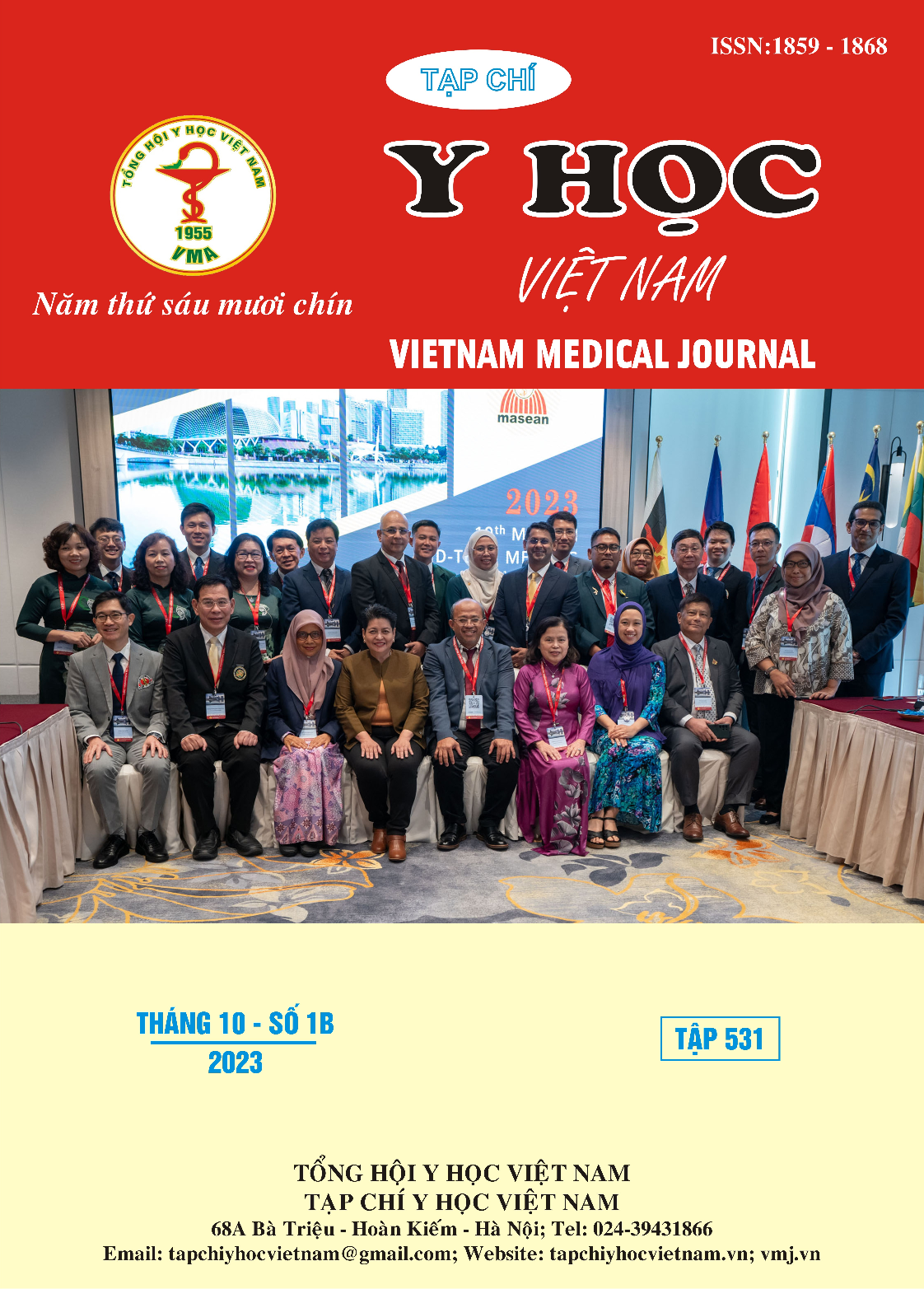A COMPARATIVE STUDY OF COMPLICATION RATES BETWEEN PERCUTANEOUS DILATATIONAL TRACHEOSTOMY AND SURGICAL TRACHEOSTOMY IN MECHANICALLY VENTILATED PATIENTS IN AN INTENSIVE CARE UNIT
Main Article Content
Abstract
Background: Surgical tracheostomy (ST) has long been established as a standard procedure in clinical practice. Over the past three decades, percutaneous dilational tracheostomy (PDT) has gained popularity, with various techniques employed. Notably, the single-step dilatational tracheostomy (SSDT) method is extensively performed in intensive care units (ICU). This study aims to compare the outcomes of PDT and ST in mechanically ventilated patients within ICU. Methods: A retrospective analysis was conducted involving 122 mechanically ventilated patients, with 55 undergoing PDT and 67 undergoing ST, at the ICU of Cho Ray Hospital between June 2020 and December 2021. The selection between PDT and ST is determined by intensivists. Results: Among the subjects, 64.8% were male. The most common underlying diseases were diabetes and hypertension. Patients in the ST group had a higher body mass index (BMI) in comparison to the PDT group. The overall complication rates after PDT and ST were 40.0% and 46.3% respectively (p=0.49), demonstrating no statistically significant variance between the two groups. However, the ST group exhibited a notably higher incidence of localized infection complications compared to the PDT group (43.3% vs 20%, p=0.011). Conclusion: In this study, the overall complication rates did not significantly differ between PDT and ST. However, the ST group displayed a higher incidence of local infections.
Article Details
Keywords
percutaneous dilatational tracheostomy, surgical tracheostomy.
References
2. Maheshwaran S, Thomas SV, Raman GK, Pookamala S. Safety of Percutaneous vs Open Tracheostomy on Intubated Patients in ICU Setting: Which One is Better? Indian journal of otolaryngology and head and neck surgery : official publication of the Association of Otolaryngologists of India. Dec 2022;74(Suppl 3):4978-4981. doi:10.1007/s12070-021-02544-6
3. Botti C, Lusetti F, Neri T, et al. Comparison of percutaneous dilatational tracheotomy versus open surgical technique in severe COVID-19: Complication rates, relative risks and benefits. Auris, nasus, larynx. Jun 2021;48(3):511-517. doi:10.1016/j.anl.2020.10.014
4. Feller-Kopman D. Acute complications of artificial airways. Clinics in chest medicine. Sep 2003;24(3):445-55. doi:10.1016/s0272-5231(03)00047-9
5. Johnson-Obaseki S, Veljkovic A, Javidnia H. Complication rates of open surgical versus percutaneous tracheostomy in critically ill patients. The Laryngoscope. Nov 2016;126(11):2459-2467. doi:10.1002/lary.26019
6. Brass P, Hellmich M, Ladra A, Ladra J, Wrzosek A. Percutaneous techniques versus surgical techniques for tracheostomy. The Cochrane database of systematic reviews. Jul 20 2016;7(7):Cd008045. doi:10.1002/14651858.CD008045.pub2
7. Yang A, Gray ML, McKee S, et al. Percutaneous versus surgical tracheostomy: timing, outcomes, and charges. The Laryngoscope. Dec 2018;128(12):2844-2851. doi:10.1002/lary.27334
8. Barbetti JK, Nichol AD, Choate KR, Bailey MJ, Lee GA, Cooper DJ. Prospective observational study of postoperative complications after percutaneous dilatational or surgical tracheostomy in critically ill patients. Critical care and resuscitation: journal of the Australasian Academy of Critical Care Medicine. Dec 2009;11(4):244-9.


